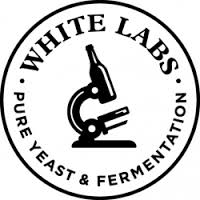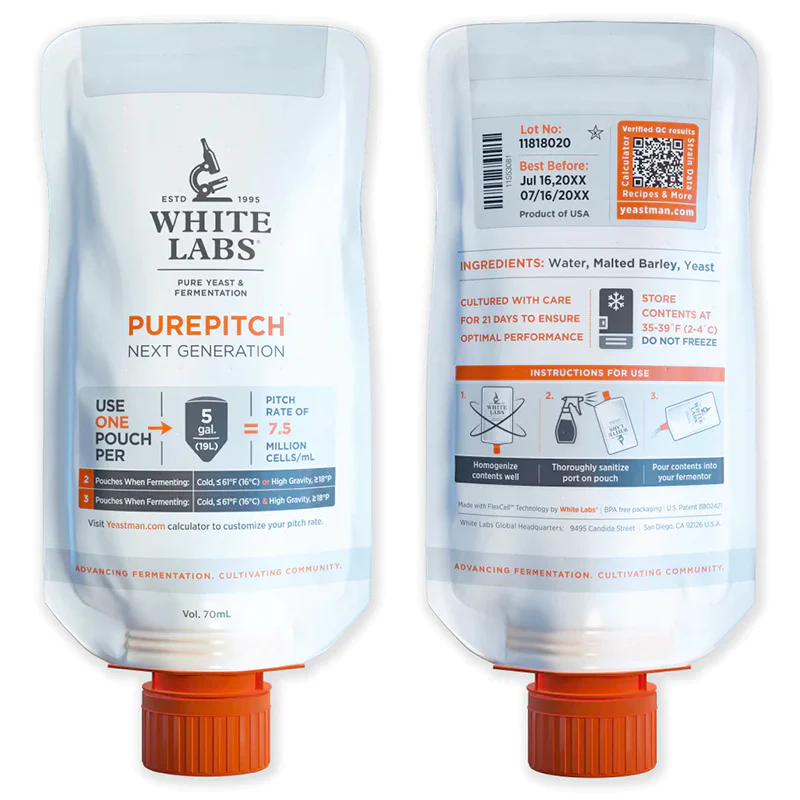Description


Charlie Papazian has been using this yeast since 1983 for most of the recipes that appear in his books, The Complete Joy of Homebrewing, The Homebrewer’s Companion and Microbrewed Adventures.
This strain was cultured up from a frozen yeast bank and given to Charlie as a “lager” yeast in the early 1980s when homebrewers didn’t have access to quality yeast, especially lager yeast. He had great success with lager brewing endeavors, but as he started experimenting and trying out new ideas, Charlie began using this yeast strain for brewing ales. During these experiments, Charlie found he could produce berry-like fruity flavor and aroma esters when he fermented it at higher ale temperatures. He soon adapted this strain of yeast to successfully produce ales, lagers, hybrids, imperials, doppels, altbiers, kölsch, British-style ales, American and German-style lagers, and many other classic styles of beer.
Charlie managed his yeast by culturing it in 1.038-1.040 very pale hopped wort in one or two-quart glass jars. The yeast was very resilient and could be kept for years on fermented wort if properly stored and not disturbed. When at times there were wild yeast infections, the wild yeast would die off over a long period of time, but his yeast would survive and ferment with consistent character.
In 2007, Chris White asked Charlie about his yeast and soon thereafter performed a microscopic examination on Charlie’s yeast. The results showed that it was a clean, healthy strain that produced great beer. It was first offered by White Labs with the name “Cry Havoc.” With Charlie’s help, we’re giving the strain a fresh name to represent the iconic homebrewer it came from.
Charlie’s assessment of his yeast:
Extremely versatile yeast for lagers, ales, hybrid-styles, and mixed fermentations. Appropriate fermentation temperatures and techniques will yield classic lager or ale characters.
FERMENTATION TEMPERATURES:
At ale higher ale fermentation temperatures classic fruity esters are produced during primary ferment. Subsequent cellaring of ales in the mid-50°F range expedites compact sedimentation and clear beer while any further fermentation continues to its endpoint.
Primary lager fermentations are vigorous mid-50°F, classically between 50 and 55°F. After fermentation subsides and the beer begins to clear transitioning to 33 to 38°F lagering for 3 to 8 weeks notably develops balanced, clean and smooth well-balanced characters.
EXISTENTIAL CHARACTERS:
This yeast is not inclined to produce perceivable diacetyl or DMS flavor/aroma compounds. With proper brewing, fermenting, conditioning and packaging final beers have a clean finish. Malt and hop characters are highlighted with this yeast.
Under certain circumstances, sulfur aroma/flavor notes can be generated during primary fermentation. Complex sulfur flavor/aroma may reveal themselves in young beer. If in these uncommon circumstances sulfur aroma and flavor compounds reveal themselves, they are always reduced to imperceptible levels over a reasonable time.
YEAST NICETIES:
Bottle or keg refermentation will take place at low temperatures, though conditioning/carbonation may take longer at cooler temperatures.
Yeast is typically very compact and sticks to the bottom of finishing package, bottles, kegs.
Yeast is hearty can be stored air-locked atop low gravity fermentations for months, even years especially when stored cool and not physically disturbed or agitated. One experience led to successfully rejuvenating yeast from a quart bottle of a 25-year-old homebrewed doppelbock. The subsequent beer made from this rejuvenated yeast was consistent with its historical character.
All the above characters and experiences can vary with different water chemistry, temperatures, yeast health, pitch volume, etc.
For Ales:
Attenuation: 66-70
Flocculation: Medium-Low
Optimum Fermentation Temperature: 68-74°F
Optimum Cellaring Temperature: 50-55°F Alt beers can be cellared at lagering temperatures
For Lagers:
Attenuation: 66-70
Flocculation: Low
Optimum Fermentation Temperature: 55-58°F
Optimum Lagering Temperature: 32-37°F
- Altbier
- Amber Lager
- American IPA
- American Lager
- American Wheat Beer
- Baltic Porter
- Barleywine
- Blonde Ale
- Bock
- Brown Ale
- California Common
- Cider
- Cream Ale
- Dark Lager
- Dopplebock
- Double IPA
- English Bitter
- English IPA
- Hazy/Juicy IPA
- Helles
- Imperial Stout
- Kolsch
- Marzen
- Old Ale
- Pale Ale
- Pale Lager
- Pilsner
- Porter
- Rauchbier
- Red Ale
- Schwarzbier
- Scotch Ale
- Stout
- Vienna Lager
We stock the largest range of yeast for home brewers in Europe, ensuring we have something for every beer style you could want to brew. Be sure to check it out here
Our goal in creating PurePitch® Next Generation for Homebrewers was to provide a product that will allow hobbyists and small scale brewers a convenient and modular package to pitch a consistent 7.5 million cells/mL; a commercially recommended pitching rate for standard ale ranges. The same package has proven to be an optimization to PurePitch® for larger professional brewers for over a year.

Now with more yeast, get a foolproof fermentation without a starter. Following a commercially recommended pitching rate allowing you to pitch like the pros!

We are the industry leader in quality with 38 quality checkpoints for every single strain. The same quality and care you trust, for both homebrew and professional yeast. You can be assured that all products released from White Labs have passed rigorous tests to ensure the highest viability and purity at the time of QC release.


With 79 Core strains and countless more in the Vault, we have has a strain for every beer, whether you’re using a trusty workhorse like WLP001 California Ale Yeast® or experimenting with something new and rare in the Vault. Find these new strains at your local homebrew store carrying White Labs, or order direct from us!


Just twist the cap & pitch!

All of our people are passionate about what we do – a combination of Departments from Sales & Marketing, Customer Service, Microbiology, Production, Packaging, White Labs Brewing Co, White Labs Analytical Laboratory, Education, and R&D are dedicated to making the best yeast possible. It’s easy to love what you do in this industry which is why so many of our team members enjoy homebrewing, just as we did when we started in 1995. We encourage our teams to homebrew and build that love of brewing, the way it was when our company was founded.

PurePitch® Next Generation for Homebrewers FAQ
Is PurePitch® Next Generation larger than your previous package?
Yes! Now with more yeast, you get double the pitch. PurePitch® Next Generation is designed to pitch at a rate of 7.5 million cells/mL per 5 gallons/20 liters, a commercially recommended pitching rate for standard ale ranges.
Do I need to make a starter?
No! For any standard ale, you will get the perfect fermentation by pitching directly – NO STARTER NEEDED.
What if I am brewing something that is not a “standard ale” – how do I know how much yeast I need for my batch?
Each pouch of PurePitch® Next Generation provides general quantity recommendations per 5gal/20L of wort.
Our online calculator at yeastman.com allows you to see the exact recommendation for you using your volume, temperature, and gravity. Allowing you to customize the pitch rate to anything you want, larger or smaller!
What does 7.5 million cells/mL mean?
When pitching 1 pouch of PurePitch® Next Generation into 5 gal/20L of wort, there will be 7.5 million cells per milliliter. This is a commercially recommended pitching rate, allowing you to pitch like the pros.
What is the shelf-life of PurePitch® Next Generation?
The shelf-life is 6 months from the QC-release date labeled on the package. As a result of the proprietary dual-layer film, yeast are able to remain in excellent condition with high viability and performance.
Why change to a new version of PurePitch® ?
Our number one request from the homebrewing community has been for more yeast! Next Generation has been developed in response to brewing styles and fermentation techniques requiring more yeast than ever before, as well as the desire for a more optimal yeast package without the need for a starter.





Reviews
There are no reviews yet.